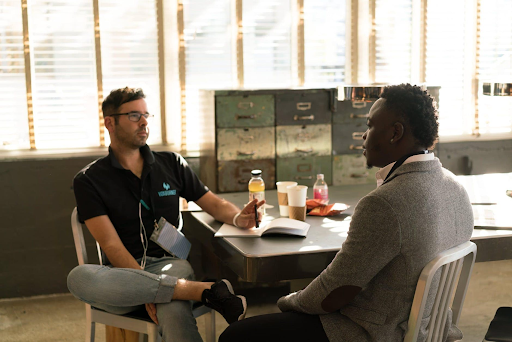Make employee safety a business priority when returning to work.
As businesses begin to open their doors to the public once again, employees are being asked to step away from their safe cocoons of working at home. Safety should be the number one concern of employers when preparing to bring their employees back into the workplace. There is such an abundance of information and misinformation about COVID-19, it can be hard to distinguish fact from fiction.
Each business is unique, and safety practices all depend on things such as how many employees work in a space, how large that space is or the particular type of work that is being done. Navigating the return to work for your employees or as a worker yourself can seem like a daunting task. In order to get the economy back in working order and to keep everyone as safe as possible, there are a few crucial factors you need to keep in mind.
Preparation
The most important aspect companies need to take care of before their employees return to work is preparation. Make sure you have a plan in place for how your employees will return safely. Having an organizational system and a plan for each employee to follow will ensure a uniform response from the entire company.
Before you even open your doors, stock up on PPE gear for all employees. Although individuals may be wearing their own masks or PPE, you need to be prepared with backup at all times. Keeping a stock of extra masks, gloves and hand sanitizer placed in strategic areas is the best way for preparation.
While each state and country has set up their own protocols for PPE, you should still be doubling up on precautionary measures. The CDC recommends both wearing a face mask AND practising social distancing, when you can, at work. As daily tasks slowly start to resemble what life was like pre-COVID-19, you may feel like you can relax on certain safety measures, but that is not true at all. You need to be vigilant, alert and practising safety measures and your company’s safety plan at all times.
Employee data and assessments
As Dr Fauci has stated, simply taking a temperature is no longer a reliable measure to test employees before entering the workplace. Instead, we need to adopt new organizational tools to organize and track employees’ health.
Having a specific set of questions that employees must complete before they return to work could be the answer to a more accurate measure of employee health and wellness. These questions can be as simple as asking if you have had any symptoms develop within the last 24 hours, or if you have recently traveled out of state.
These assessments can be completely flexible, depending on the specific situation. If there is a low risk of COVID-19 in your area, maybe you would only need to use this assessment at the beginning of each week. It may seem tedious but, if a situation changes, you could also ask employees to complete a health assessment each day before work. Something as quick as a few questions each day would ensure a more accurate tracking of healthy employees.
If any of your employees are in quarantine, you will also need to track that information all in one place. While following a 14-day quarantine order, during the last three days at home, an employee should get an additional COVID-19 test to prove they can test negative for COVID-19 before returning to work.
Personal property versus shared property
For the businesses able to do so, we recommend employees bring in their own office supplies and devices from home. In doing this, you are minimizing the use of shared property and cutting down the potential spread of germs. If an employee brings in their own computer, mouse, notepad, etc. to work with, at the end of the day, they can just pack everything up and leave a fresh work surface for the next employee.
Staggered employee numbers in the office
To ensure social distancing is possible, you should be staggering the number of employees in the office at one time. Employees should be working on a rotational basis to cut down the volume of people in a space at any given time. Employees may rotate every other day or work a certain number of days in a row to minimize shared surfaces every other day. Having groups that are always together (e.g. Group A works in the office on Mondays, Group B works in the office on Tuesdays, etc.) makes is easier to isolate and quarantine if someone in one of the groups tests positive. Keeping a small number of employees and a flexible work calendar is essential to keep up with office social distancing.
Randomized testing for larger organizations
For companies with a large number of staff all working in the same space together, it would be a smart idea to start doing random weekly testing to ensure the health and safety of all. As a preventative measure, we recommend randomly testing five percent of employees each week.
All it takes is one person getting sick for it to spread to the whole staff. Rather than waiting until there is a problem, preventative measures can catch an outbreak in its tracks. Having randomized testing is just an extra step you can take to make sure your doors are staying open.
Employees need to stand up for themselves
If your workplace has asked you to come back to the office, but they have no safety protocol or plan in place, don’t be scared to voice your opinion and concern about returning. Employees need to hold employers accountable for keeping their teams safe.
Tensions can be high when returning to work, but it is important to understand that this is an unprecedented time for everyone. We see a large majority of companies right now taking their employees’ best interests in mind and working hard to develop plans and safety protocols for return to work. If your place of employment has a good safety plan put in place, you should feel more confident about being able to return to work and work there safely.
Amar Goel is the Founder and CEO of Safeter, a mobile app-based technology that enables employers to bring their employees back to work safely. The company is based in the San Francisco Bay area in the US.






















